- Cart
- |
- Personal Center
- |

7.4um QCL combined with hollow core fiber gas chamber gas analysis system to analyze H2O in air
Product features:
Part Number:--
Application area:
Add to Cart Consult Favorite
Description
Theoretical basis
1. Beer-Lambert law
When a laser beam passes through a gas with a concentration of C, when the wavelength of the laser is the same as the center frequency of a certain absorption spectrum line of the gas being measured, the gas molecules will absorb photons and transition to a high energy level, which is manifested as the attenuation of the laser light intensity in the gas absorption band.
2. Wavelength modulation spectroscopy technology
A) Tuning characteristics of lasers
DFB lasers have good monochromaticity, narrow linewidth characteristics and frequency tuning characteristics. DFB lasers can well avoid cross-interference from other background gases, so that the detection system has good measurement accuracy, and are therefore widely used in gas detection.
B) Harmonic detection theory
By adding a high-frequency sinusoidal voltage signal to the driving voltage of the laser, the current is changed, and the output frequency also changes according to the sinusoidal law. By adding a sawtooth voltage to the laser drive, the output wavelength is scanned on both sides of the gas absorption peak, and the harmonic signal is modulated and demodulated using a phase-locked amplifier to measure the gas concentration.
3. Principles of absorption spectrum selection
When performing gas detection, the selection of absorption spectrum is very critical, and the following aspects should be considered:
(1) The gas should have a strong absorption peak at the selected spectrum line,
(2) The laser light source technology corresponding to the spectrum line wavelength should be relatively mature.
(3) There is no interference from background gas absorption at the selected absorption spectrum line, or the absorption is relatively weak and can be ignored.
Parameter
Experimental instruments
1. 7.4um low-power desktop DFB-QCL mid-infrared quantum cascade laser
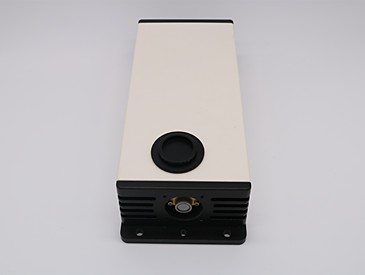
QCL7400-7.4um low-power desktop DFB-QCL mid-infrared quantum cascade laser is the first low-power QCL DFB laser developed by Idealphotonics in the first half of 2018. The tunable range exceeds 100nm, and the output power is greater than 25mw to meet the industrial needs of customers testing gas sensors. Our laser collimated output has stable output power and extremely high temperature and wavelength stability, which is several orders of magnitude higher than the stability of traditional high-power quantum cascade lasers. It provides the best test light source for our mid-infrared test customers.
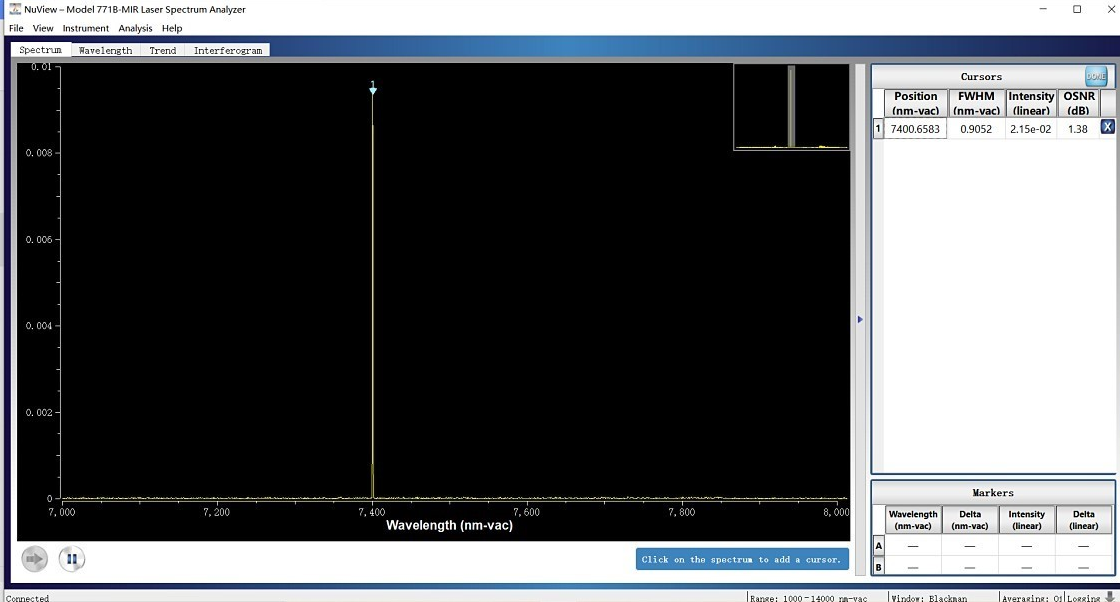
spectral
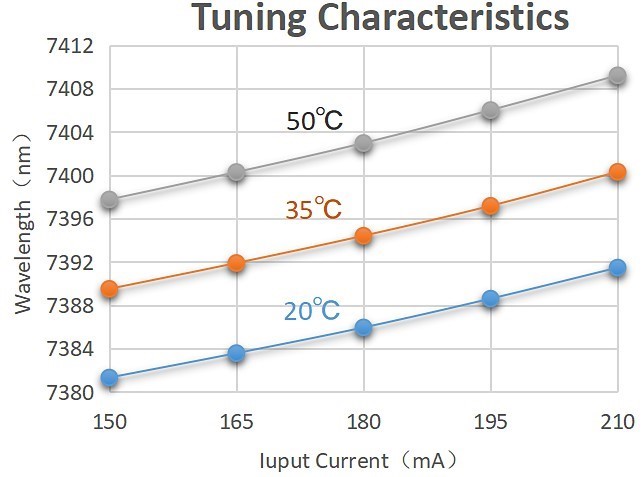
Wavelength Temperature Current Tuning Curve
2. 5-meter long optical path miniaturized Mini mid-infrared hollow-core fiber gas absorption cell
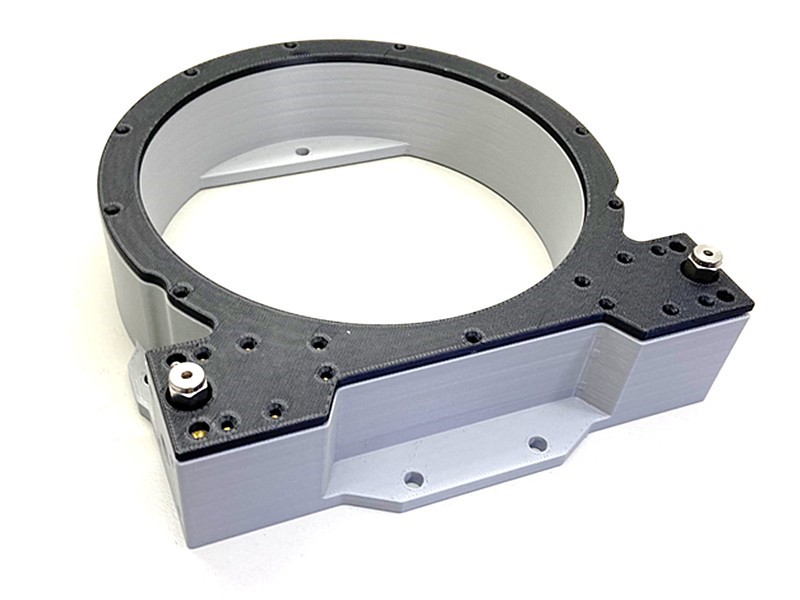
HC-5-MIR 5-meter long optical path gas absorption cell can be used for spectral analysis detection. The sturdy and compact gas chamber is coiled with hollow optical fiber, and its arrangement is very simple. In the hollow fiber, the detection beam and the analyte overlap, thus achieving sensitive laser absorption spectroscopy and trace gas and isotope analysis with a sample amount of min.
3. 2-15um Mercury Cadmium Telluride (MCT) mid-infrared photodetector with amplification and TEC
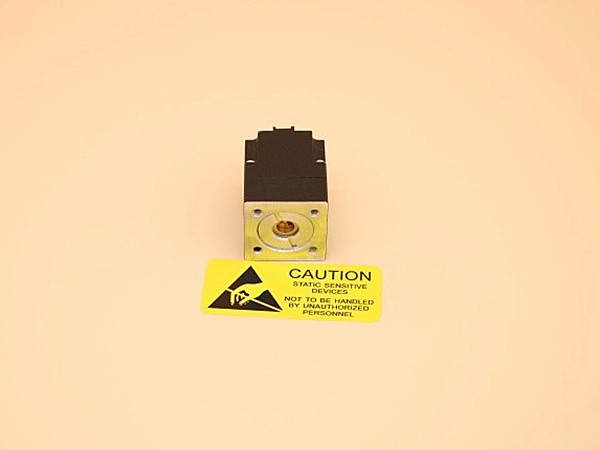
The MCT-15-4TE amplified detector is a thermoelectrically cooled photoconductive HgCdTe (mercury cadmium telluride, MCT) detector. This material is sensitive to light in the mid-infrared spectral band from 2.0 to 15μm. A TEC (thermal temperature controller) uses a thermistor feedback circuit to control the temperature of the detector element at -30°C, thereby minimizing the effects of thermal changes on the output signal. For best results, we recommend connecting the output cable (not included) with a 50 ohm termination. Since the detector is AC coupled, it requires a pulsed or chopped input signal. AC coupled detectors will not see an unchopped DC signal because they are sensitive only to changes in intensity, not the absolute value of the intensity.
Experimental testing
This experiment used a 7.4um QCL laser combined with a 5-meter optical path hollow-core fiber gas absorption cell to test H2O gas in the air.
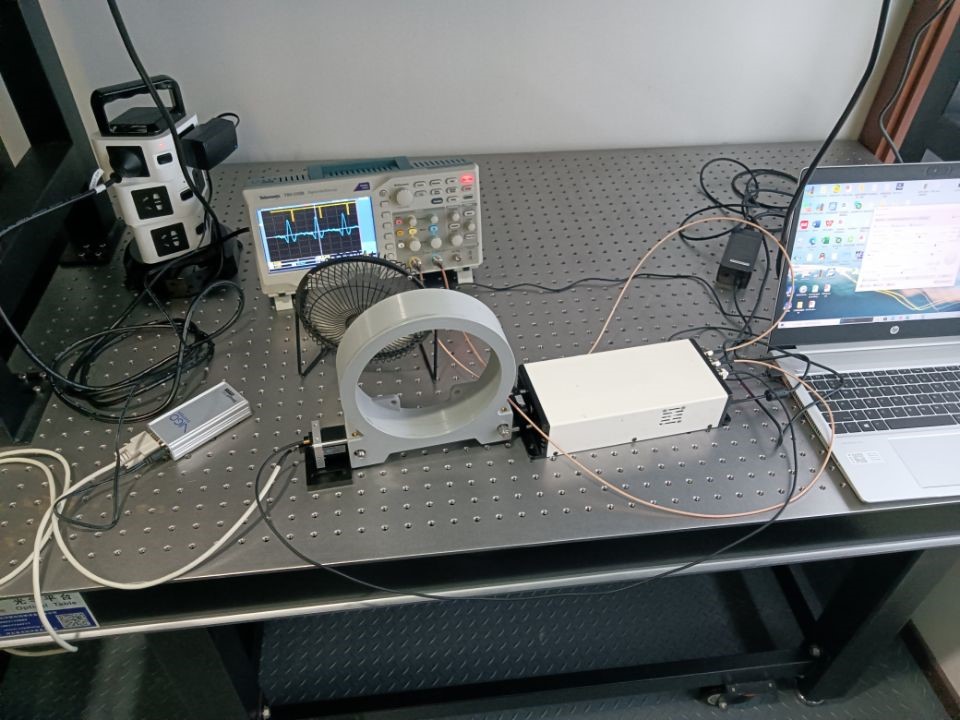 System Diagram
System Diagram
Operation steps:
1. Install the 7.4um QCL laser and collimate the output to one end of the hollow-core fiber chamber
2. Connect the other end of the hollow-core fiber chamber to the MCT detector
3. Use a BNC to SMA cable to connect the detector and the PREAMP preamplifier end of the 7.4um QCL laser
4. Use a BNC-BNC cable to connect the oscilloscope and the DACOUT analog output end of the 7.4um QCL laser
5. Use a BNC-BNC cable to connect the oscilloscope and the TRIG OUT trigger end of the 7.4um QCL laser
6. Turn on the laser and detector
7. Adjust the software parameters and observe the second harmonic signal waveform, amplitude and other information on the oscilloscope
Process analysis: Use the control software on the computer to adjust the current and temperature to tune the wavelength, so that the laser can scan a certain wavelength range and cover the absorption peak of the gas. The phase-locked amplifier provides a high-frequency sinusoidal modulation signal to make the laser output frequency sinusoidally modulated. The light emitted by the laser passes through the gas absorption cell and enters the preamplifier circuit at the PREAMP end through the detector, and then After being modulated and demodulated by the lock-in amplifier, the signal is sent to the oscilloscope channel 2 through the DAC OUT analog output terminal to display the second harmonic signal. During the whole process, we adjusted various parameters in the software and observed the output waveform at the same time to optimize the output waveform.
A) Test results
1. The second harmonic waveform and modulation parameters are as follows:
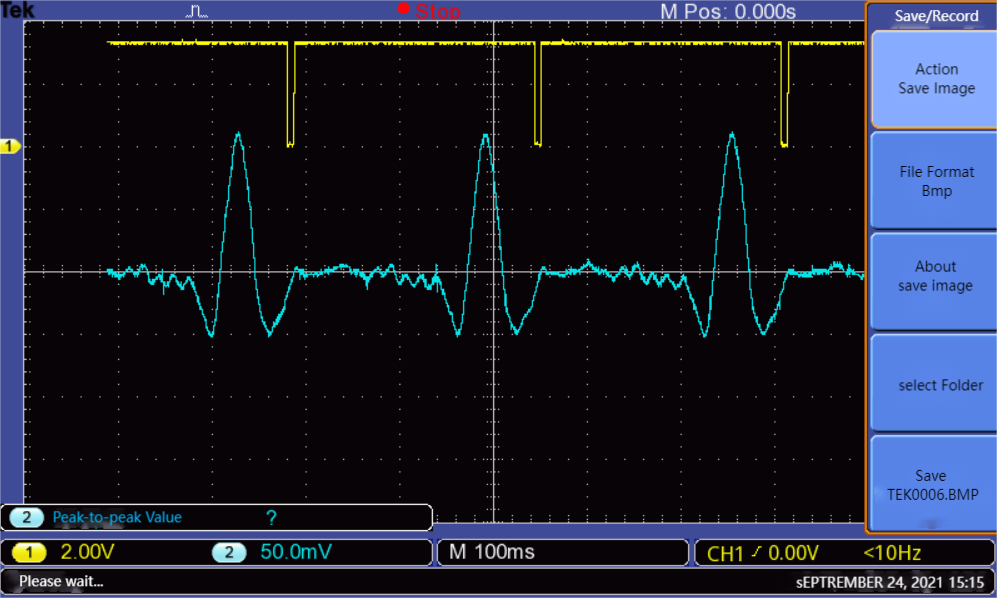
Second Harmonic
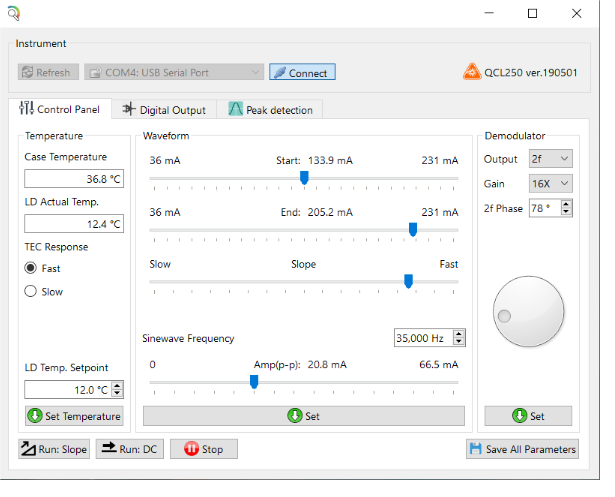
Software modulation parameters
Verification analysis:
By querying the Hitran database, the absorption lines in the wave number range of 1354cm-1 to 1356cm-1 are as follows:
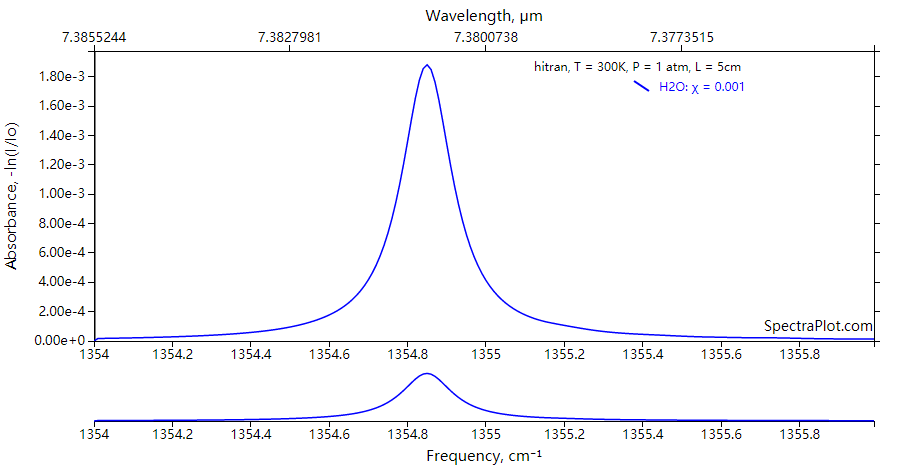
The absorption peak wavelength is about 7.381um. By comparing the second harmonic amplitude information, it is consistent with the database, thus verifying that it is H2O gas.
2. Experimental conclusion:
Through testing, we found that when using this test system to analyze H2O gas in the air, the second harmonic amplitude can reach 150mV, indicating that this test system has high accuracy.
Product list:
# | name | describe |
1 | 7.4um mid-infrared quantum cascade laser | Peak operating wavelength 7.4um, output power 5mW, spectral width <1MHz, output isolation 30dB, benchtop size 340(L)x240(W)x100(H)mm |
2 | 5m long optical path miniaturized Mini mid-infrared hollow core fiber gas absorption cell | Effective optical path 5m, wavelength range 3-12um, output divergence angle 30mrad, operating atmospheric pressure 0.01-1atm |
3 | 2-15um mercury cadmium telluride (MCT) mid-infrared photodetector | Response wavelength range 2-15um, photosensitive surface size 2x2mm, working bandwidth 10MHz-14MHz |
4 | USB flash drive | Including operating software, product operation manual |
1、7.4um low-power desktop DFB-QCL mid infrared quantum cascade laser
http://www.microphotons.cn/?a=cp3&id=120
2、5-meter long optical path miniaturized Mini mid infrared hollow fiber gas absorption cell
http://www.microphotons.cn/?a=cpinfo&id=1094
3、2-15um mercury cadmium telluride (MCT) mid infrared photodetector with amplification and TEC
http://www.microphotons.cn/?a=cp3&id=418
--
⇪